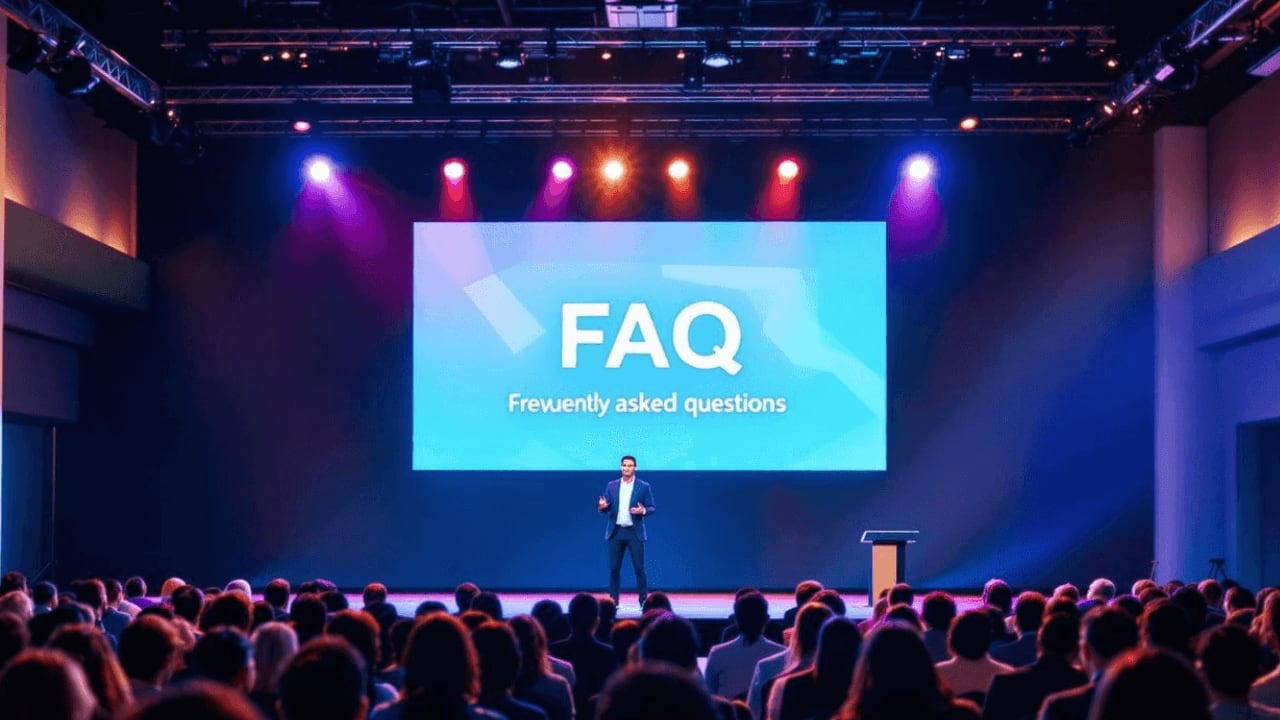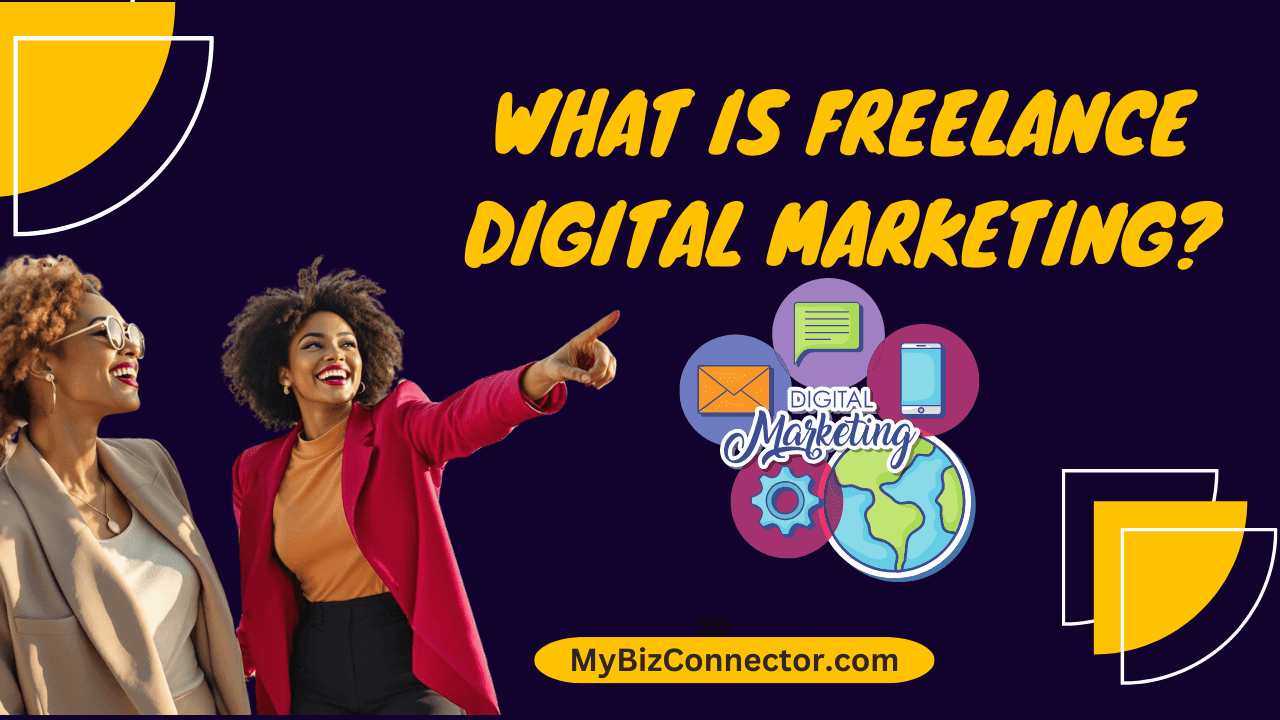Learn what is freelance digital marketing, how to get started, find your niche, and grow a successful remote career with clients around the world.
Unleash the Power of Target Audience
in Digital Marketing
Unleash the Power of Target Audience
in Digital Marketing

Key Highlights
Key Highlights
Knowing your digital marketing audience is very important for good marketing.
Audience segmentation helps you send messages to specific groups.
Analyzing data gives you a clear view of how people behave and what they like.
Making buyer personas helps you picture and know your ideal customers.
Measuring success and getting feedback keeps your plans on track and useful
Introduction
Introduction
In digital marketing, it is essential to know your target audience. Sending random messages will not work well. Your marketing efforts will improve when you focus on the real needs and interests of the people you want to reach. When you define your digital marketing audience, you can make every part of your campaigns better. This improves the content you create and the platforms you choose.
Understanding Digital Marketing Audience Segmentation
Understanding Digital Marketing Audience Segmentation

Audience segmentation means dividing your potential customers into several groups. You can do this by looking at their common traits. These traits can be demographic, such as age, gender, and where they live, or psychographics, which includes interests, values, and lifestyle.
When you learn about these groups, you can create better marketing campaigns. These campaigns can reach people more deeply. This can boost engagement, build brand loyalty, and result in more sales.
The Importance of Identifying Your Audience
The Importance of Identifying Your Audience
Identifying your target audience is very important for a successful marketing strategy. You need to know who your ideal customers are. You should also understand what motivates them and where they spend time online. This knowledge helps you to change your marketing efforts. It ensures your message gets to the right people at the right time.
Market research is very important in this step. You can do surveys, check data from your website, or look at trends on social media. This helps you understand who your audience is, their interests, and the problems they face.
With this knowledge, you can create marketing campaigns that connect with what your audience needs and wants. This clear approach helps your campaigns perform better. It also increases your return on investment by reducing wasted resources on people who don’t care.
Key Elements of Audience Segmentation
Key Elements of Audience Segmentation
When you split your audience, it's important to mix demographic information and behavioral targeting. Demographic data helps you know who your audience is. Behavioral data shows how they interact with your brand.
Here are some key elements to think about:
Demographics: This includes age, gender, where people live, their education level, income, and what jobs they have.
Psychographics: This looks at people’s values, interests, lifestyles, personalities, and attitudes
Behavioral: These are details about past purchases, how people interact with websites, their engagement habits, and the devices they use.
When you divide your audience by these factors, you form clear groups of consumers who share similar needs and habits. This helps you send targeted marketing messages that resonate with each group. The outcome is more engagement, increased conversion rates, and stronger relationships between your brand and your customers.
Leveraging Data for Audience Analysis
Leveraging Data for Audience Analysis
In today's online world, data matters a lot. There is a lot of it out there! By using the data you have, you can understand how your audience interacts online. This allows you to improve your marketing strategies and get better results.
You can look at website data and social media activity to see what the numbers show. This helps you make better choices about audience targeting.
Utilizing Analytics to Understand Audience Behavior
Utilizing Analytics to Understand Audience Behavior
Google Analytics is an important tool for learning about how your audience acts online. It provides lots of details about website visitors, who they are, and how they interact with your site. You can track key information like bounce rates, the time people spend on a page, and conversion rates. This helps you understand how well your content works and shows you ways to make it better.
You can learn what your audience likes by watching how they shop. This helps you create products and design marketing messages that truly meet their needs and interests.
Analyzing data should be a regular part of your routine. Make sure to check your Google Analytics data often. By doing this, you can adjust your marketing strategies based on what your audience does. This practice is important for being successful online in the long run.
Importance of SEO in Audience Targeting
Importance of SEO in Audience Targeting

Search Engine Optimization (SEO) plays a pivotal role in honing audience-targeting strategies in digital marketing. By optimizing content with relevant keywords and meta tags, businesses can enhance their visibility to the right audience. SEO ensures that your website ranks higher on search engine results pages, attracting organic traffic from potential customers actively seeking your products or services. Implementing SEO best practices not only boosts brand visibility but also connects you with an audience actively interested in what you offer.
Tools and Techniques for Gathering Audience Insights
Tools and Techniques for Gathering Audience Insights
To understand your audience better, you need to look at it from different angles. Social media analytics tools can show you important details about your audience. This includes who they are, what they like, and how they engage with you on different platforms. Customer data from your CRM system is also helpful. It gives you insights into their purchase history, interactions with customer service, and personal preferences.
Data management platforms (DMPs) are central places where you can gather, sort, and use your audience data. With these platforms, you can break down your audience into different groups. This makes it easy to connect your data with your advertising and marketing tools. Here are some tools and how they are used:
Google Analytics: Website traffic, user demographics, engagement patterns.
Social Media Analytics: Audience demographics, interests, and platform engagement.
CRM Systems: Purchase history, customer interactions, and support preferences.
Data Management Platforms (DMPs): Centralized data collection, segmentation, and activation.
Crafting Personas for Targeted Marketing Strategies
Crafting Personas for Targeted Marketing Strategies
Personas are useful tools that take data and turn it into easy-to-understand stories about your ideal customers. When you assign a name, face, and background to your target audience, you can connect with them better. This helps make your marketing efforts feel more personal and relevant.
A good persona includes more than just age and gender. It should also cover what people care about, what challenges they face, and what they hope to achieve. These detailed profiles help guide you in creating content, developing products, and shaping your whole marketing strategy.
The Role of Demographics in Persona Creation
The Role of Demographics in Persona Creation
When making buyer personas, demographic information matters a lot. It helps us know our target audience better. Things like age, gender, location, education, and job show us a basic view of our customers’ lives.
A luxury watch company: may focus on professionals aged 35-55 who have money to spend.
A brand that sells eco-friendly clothes: may aim at younger customers, like millennials or Gen Z, who care about the environment.
We should keep in mind that demographics are just the beginning. If we only use this data, we might make wrong judgments. To create good buyer personas, we also need to study psychographics, behaviors, and motivations.
Psychographics: Beyond Basic Demographics
Psychographics: Beyond Basic Demographics
Demographics help us find a group of people. But psychographics explain the "why" of their actions. Psychographics look into values, beliefs, interests, lifestyles, and attitudes. This helps us connect with our audience on an emotional level. It builds a stronger brand loyalty.
The two women are both 30 years old and live in a city. They have similar backgrounds, but their interests are quite different. One woman is very focused on her career. She enjoys traveling and dining at nice restaurants. The other woman is a freelance artist. She cares a lot about sustainability and prefers living simply. Although they seem alike in demographics, their needs, wants, and shopping habits are very different.
By knowing these different ways people think, we can make marketing messages that match their dreams and values. This helps us connect more deeply and achieve better outcomes.
Effective Channels for Reaching Your Digital Audience
Effective Channels for Reaching Your Digital Audience

Choosing the right channels to connect with your audience is very important. You should know where they spend their time online. What social media do they use? What websites do they visit? These are key questions to think about.
Social media platforms like Facebook and Instagram bring in different kinds of people. LinkedIn focuses on making professional connections. Each platform shares content in its own unique way. Choosing the right mix of platforms will help you connect with the right people. This will help you increase your reach and engagement.
Choosing the Right Platforms for Your Audience
Choosing the Right Platforms for Your Audience
In the fast-changing world of digital advertising, it's important for the right people to see your message. Choosing the right social media platforms is key to your campaign's success. Each platform has a different group of users. They have their own backgrounds, interests, and online behavior.
If you want to connect with younger people who enjoy fashion, beauty, or lifestyle content, use Instagram and TikTok.
If you have a B2B company and want to reach decision-makers and industry experts, focus on LinkedIn as an important part of your plan.
Remember, there is no one-size-fits-all approach. It’s important to do some research. Look into the demographics, interests, and behaviors of the users on each platform. This will help you reach the right audience for your content.
Integrating Multi-Channel Marketing Efforts
Integrating Multi-Channel Marketing Efforts
A good marketing plan doesn’t only focus on one platform. It brings together different marketing efforts to keep your brand visible online. This helps you reach more people and makes a bigger impact. When you work together across various platforms, it is easier for your target audience to connect with your brand.
You can use social media to help people know about your brand and get visitors to your website. Your website can feature helpful content and email sign-up forms. These can turn leads into customers and help them through the sales process. You can also use paid ads on sites like Google Ads or social media to share your message more widely.
The key is to share the same message everywhere. Staying consistent with your brand, messages, and images helps people remember and trust you. This approach gives a similar experience to everyone and makes your marketing efforts even stronger.
Measuring Success in Audience Engagement
Measuring Success in Audience Engagement
Effective audience engagement is not just about reaching the right people. It is about starting talks, building connections, and making a sense of community around your brand. But how can you tell if these actions are working well?
Key performance indicators, or KPIs, are numbers that show how well you are doing. They help you follow your progress, spot areas that need improvement, and learn what your audience enjoys.
Key Performance Indicators (KPIs) for Audience Targeting
Key Performance Indicators (KPIs) for Audience Targeting
Understanding key performance indicators (KPIs) for audience targeting is very important in digital marketing. By checking numbers like conversion rates, click-through rates, and engagement levels, businesses can see how well their marketing efforts connect with the right people. Tools like Google Analytics can track demographic information and online behavior. This helps businesses understand what potential customers like. Watching KPIs helps improve marketing campaigns. It works by focusing on different audience segments and their behaviors. This leads to better targeting strategies and a stronger link to business goals.
Adjusting Strategies Based on Audience Feedback
Adjusting Strategies Based on Audience Feedback
In the rapidly changing world of digital marketing, it's crucial to listen to your audience. A customer relationship management (CRM) system can assist you with this. It allows you to collect feedback from various sources, such as surveys, social media, and customer service chats.
This feedback provides you with helpful hints about what your audience likes and dislikes. It also shows what they want from your brand. You can use this info to adjust your marketing efforts. By doing this, you can keep your content interesting and relevant.
It is important to remember that what people like can change over time. If you gather feedback and check it often, you can keep your marketing in line with their needs and what they expect.
Frequently Asked Questions
Frequently Asked Questions

How Do I Identify My Target Audience in Digital Marketing?
How Do I Identify My Target Audience in Digital Marketing?
Finding your target audience starts with good market research. Begin by looking at your current customers. Next, find out who your competitors are targeting. You can get new information by using surveys and keyword research. This allows you to understand your ideal customer’s age, behavior, and interests.
What Are the Best Tools for Audience Segmentation?
What Are the Best Tools for Audience Segmentation?
Powerful marketing tools like Google Analytics and social media analytics provide a lot of useful information. This information helps you get to know your audience better. Data management platforms (DMPs) offer advanced features. They allow you to organize and use audience data across different marketing channels.
Conclusion
Conclusion
Defining your audience in digital marketing is very important for successful campaigns. When you know your audience well and group them, you can create strategies that meet their needs and wants. Using data and customer profiles can help you focus your marketing efforts. Use analytics and tools to get insights for better engagement with your audience. Choose the right platforms and channels to connect effectively. Check your success with key performance indicators. Make changes based on feedback to keep improving. Knowing who your audience is lays the foundation for strong digital marketing campaigns that reach your target market. Connect with My Biz Connector to learn more about a Target Audience in Digital Marketing.
Hi! I'm an affiliate marketer passionate about creating unique content that helps people reach their potential. With a knack for digital marketing, I strive to find exciting ways to connect people with the products and services they need.
Want to Make More Money?
Want to Make More Money?
Learn How To Launch Your Own Wildly Profitable Affiliate Marketing Business In Just 7 Days.
Learn How To Launch Your Own Wildly Profitable Affiliate Marketing Business In Just 7 Days.
Similar Posts
Similar Posts

What is Freelance Digital Marketing? Start Your Career Today

Email Marketing Lead Generation: 8 Powerful Strategies
Discover 8 proven Email Marketing Lead Generation strategies to attract high-quality leads, increase conversions, and grow your business effortlessly.
Want to Make More Money?
Want to Make More Money?
Learn How To Launch Your Own Wildly Affiliate Marketing Business In Just 7 Days.
Learn How To Launch Your Own Wildly Affiliate Marketing Business In Just 7 Days.
